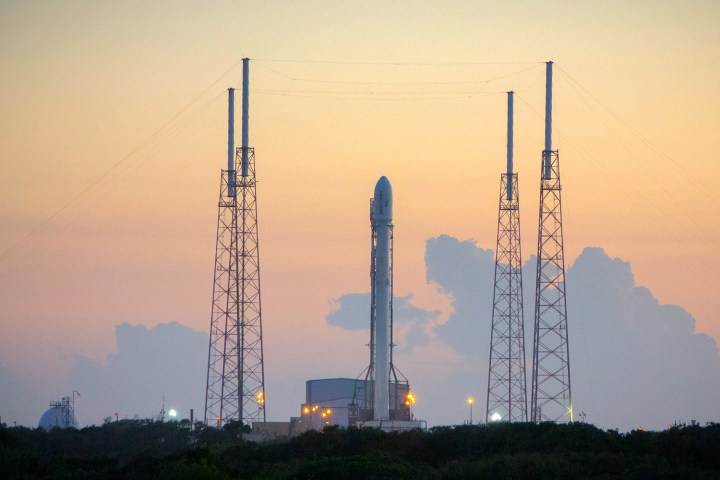
Besides SpaceX, which you’d be forgiven for thinking was the only private space company in existence with all the attention it gets, NASA has selected Oribtal ATK and Sierra Nevada Corp. (SNC) in a total deal potentially worth $14 billion over the next eight years. Each of the providers is guaranteed at least six cargo resupply missions, NASA said.
Besides transporting supplies to the ISS, such missions also help with the disposal of unneeded cargo, and transport research samples back to Earth.
In grander terms, NASA describes the partnerships as helping to guarantee “the critical science, research and technology demonstrations that are informing the agency’s journey to Mars.”
While SpaceX and Orbital ATK have already been working with NASA for some time, it’s the first time for SNC to become involved. The company is set to use its “mini shuttle” Dream Chaser spaceplane, shown below. The reusable vehicle will head into space on an Atlas V rocket and, once its resupply mission is complete, return to Earth horizontally, landing on a regular runway.

SNC president Eren Ozmen said his company was “honored” to be selected by NASA and is looking forward “to successfully demonstrating the extensive capabilities of the Dream Chaser spacecraft to the world.”
Each of the contracted companies offers different technologies and systems, which, as NASA points out, “provides more options and reduces risk through a variety of launch options and mission types.”
Commenting on the new contracts, NASA Administrator Charles Bolden said that back in 2010 when President Obama pledged NASA’s commitment to work with a growing number of private space companies, few would’ve imagined “that less than six years later we’d be able to say commercial carriers have transported 35,000 pounds of space cargo to the International Space Station – or that we’d be so firmly on track to return launches of American astronauts to the ISS from American soil on American commercial carriers. But that is exactly what is happening.”
Bolden added that these latest contracts were “a big deal that will move the president’s vision further into the future.”
The first missions linked to the new contracts will begin in 2019. Meanwhile, SpaceX is gearing up to take an ocean-monitoring satellite into orbit next week, part of a mission that will include an attempt to land its rocket on a floating platform in the Pacific.
Editors' Recommendations
- Junk from the ISS fell on a house in the U.S., NASA confirms
- SpaceX all set for a record-breaking rocket launch on Friday
- SpaceX shares stunning night shot of its Super Heavy booster
- SpaceX already has a date in mind for next Starship launch
- Take a high-speed ride on SpaceX’s emergency escape chute


